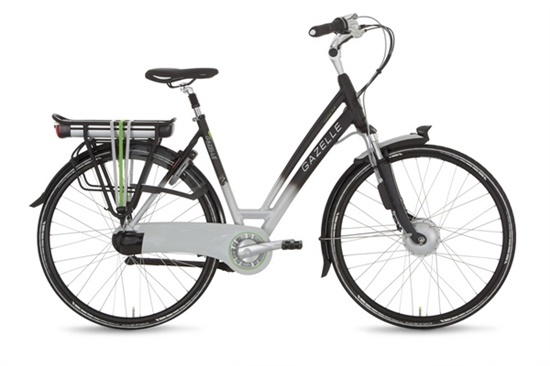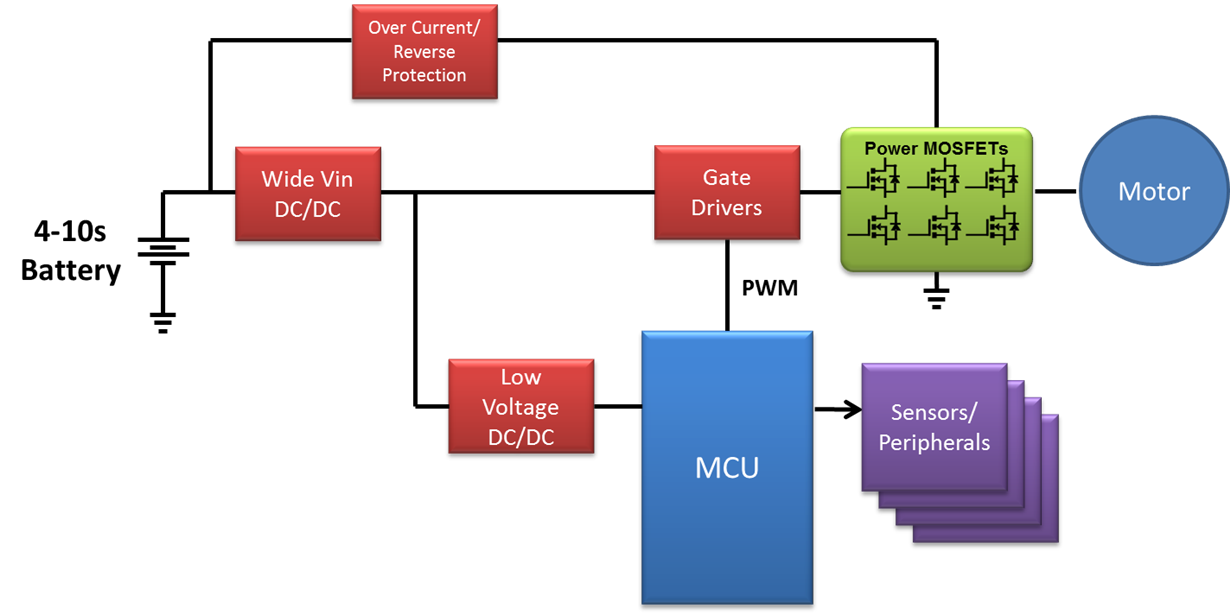We can all remember a time when we’ve really needed to use an electronic device, only to find out the battery is dead. For years, our portable electronics have been limited by battery life and battery size. As the cost of Lithium-ion batteries continues to decrease and the charge density increases, longer lasting and exciting portable applications will emerge. As applications begin to trend toward using these high-cell battery packs, designers will be faced with converting higher voltages to voltages that are practical for compact electronic circuitry, while overcoming the challenges of transient effects and variation in battery voltage.
Examples include drones, vacuum robots, power tools, and E-bikes. Developers are trending toward using higher cell battery packs to increase battery life between charging. Currently, flight time for drones is limited to roughly 25 minutes, and E-bikes can travel a maximum of 50 miles on a single charge. This battery life will increase as smaller, higher voltage batteries are used.
One commonality between all of these applications is a motor, which can have adverse transient effects on the supply voltage such as motor kick-back and inductive spikes that can be as high as twice the input voltage. These higher voltages can damage the system power solution and other internal circuitry if the input voltage range is not rated accordingly. If the motor abruptly stops or slows down, a negative current is pumped into the supply causing the supply voltage to increase. In the figure below, channel 1 shows the supply current, channel 2 shows the supply voltage, and channel 3 shows the motor speed.
Figure 1: Supply pumping due to slowing of a motor.
As the motor slows down, the supply voltage significantly increases. If the DC/DC converter off the battery is not rated to operate at a higher voltage, this will damage the system power solution and potentially downstream components.
When designing a system, selecting a DC/DC converter that supports a wide range of input voltages can minimize, and often eliminate, the need for external transient protection circuitry. This not only simplifies the design, but also significantly decreases the solution size. Systems using DC/DC converters that can operate at higher voltages are able to withstand an increase in supply voltage and maintain voltage regulation at the output. TI’s LM5000 family of devices is a well-suited solution with an input voltage rated for up to 42V/65V to handle transients for 12V/24V systems. For example, the LM5007 and LM25011 are a good fit for protecting against a brief increase in supply voltage that is often seen in these systems. For an even higher voltage 24V/48V input bus, a 100V synchronous buck controller like the LM5116 can handle the worst-case transients of these systems. Buck controllers and converters with a wide input voltage range offer a great solution for high cell battery pack applications, and protect against transient effects to allow the device to maintain operation under these conditions.
A simplified block diagram of a battery pack power supply design is show in Figure 2.
Figure 2: High cell battery pack system block diagram.
As you look to create the latest and greatest portable or autonomous electronic device, consider the worst-case system transient effects that can occur and select a wide VIN DC/DC device that will protect downstream circuitry.
Additional Resources:
-
Explore the variety of Wide VIN DC/DC regulators offered by TI.
-
Read Allen Chen’s blog “When it comes to batteries, not even the sky’s the limit” to learn more about high cell battery pack applications.
-
Start a power supply design now in WEBENCH Power Designer.
-
Simulate your design using the LM5116, LM5000 and LM25011 SPICE models.



